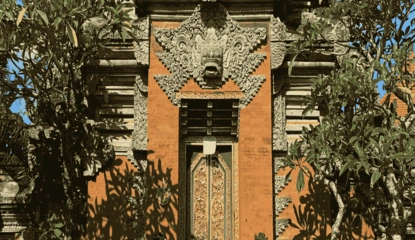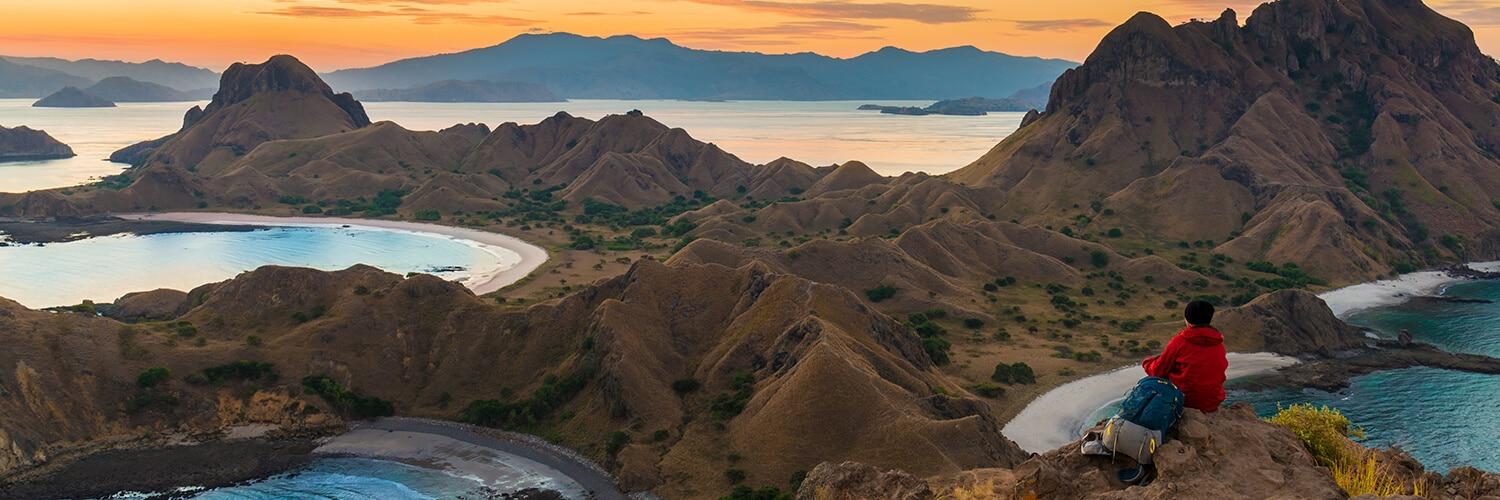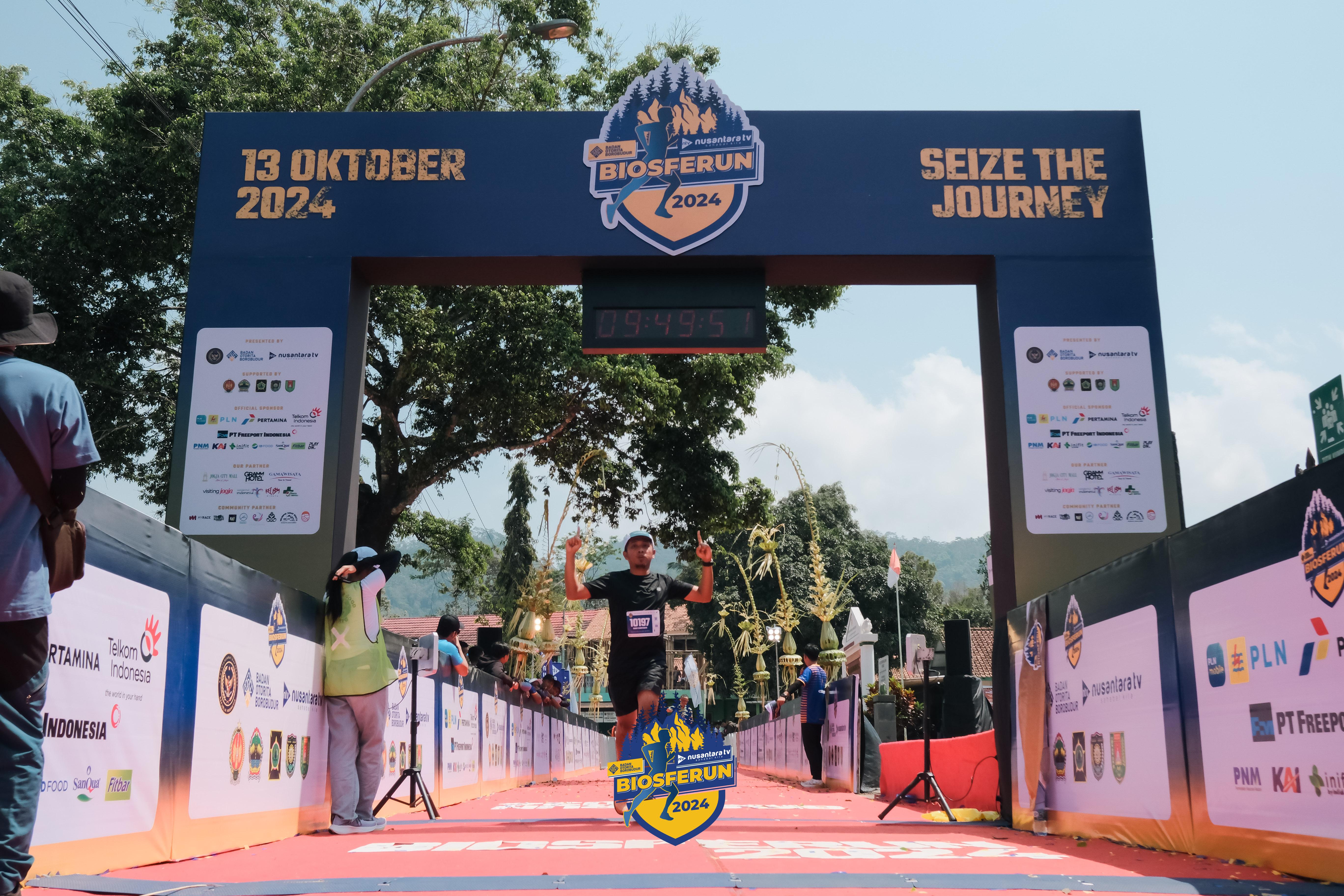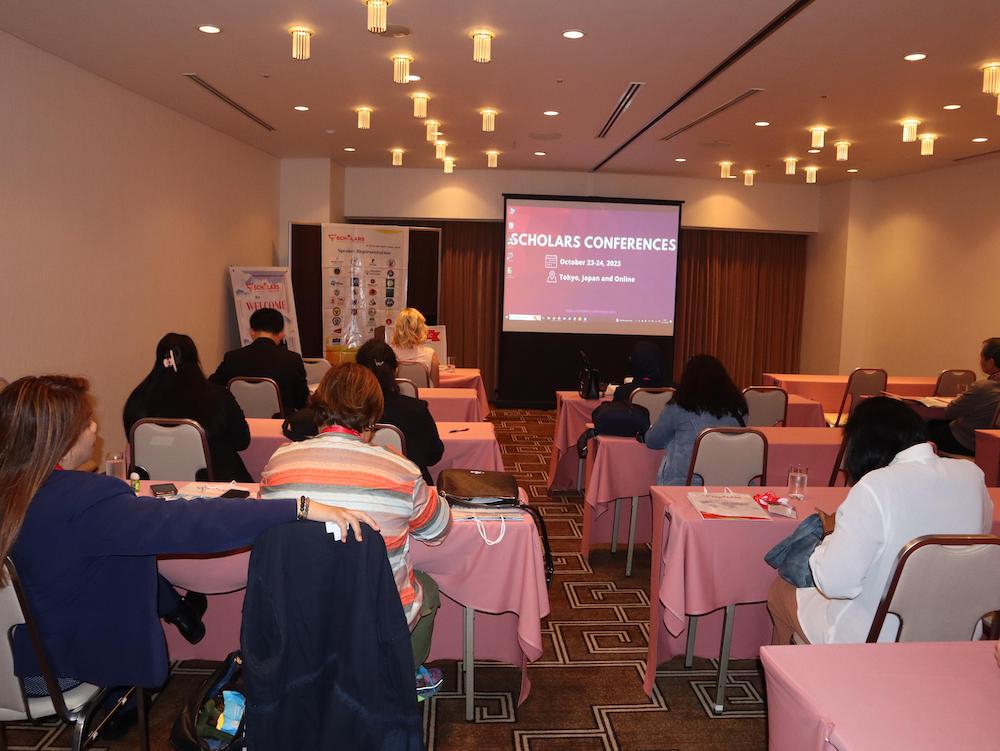Nestled at the heart of the Indonesian archipelago, between the islands of Sumbawa and Flores, Komodo National Park is a dream destination for adventure seekers and nature lovers. Part of the East Nusa Tenggara province, the park was founded in 1980 to protect the Komodo dragon, and then was dedicated to protecting other species too, including marine species.
This UNESCO World Heritage Site is home to the world's largest and most powerful lizard: the Komodo dragon. These ancient reptiles can reach lengths of up to 3 meters and weigh as much as 150 kilograms. Fearless predators, they hunt deer, buffalo, and occasionally even humans.
Declared Man and Biosphere Reserve in 1991, this national park is one of the world's 25 biodiversity hotspots, where most of the remaining 3,000 endangered Komodo dragons (Varanus komodoensis) can still be found. Visitors can observe these majestic creatures in their natural habitats, which are spread throughout the East Nusa Tenggara area, with the biggest populations roaming the Komodo National Park, particularly Rinca Island.
Photo credit: © Ringo_Wong_hkherper/istockphoto.com
Also selected as one of the New 7 Wonders of Nature, Komodo National Park captivates visitors with its breathtaking volcanic landscapes, lush tropical forests, and world-class diving and snorkeling spots.
The sea surrounding the islands, part of the Coral Triangle, is equally impressive. Its crystal clear water is teeming with vibrant coral reefs and a wide variety of sea creatures, including sea turtles, manta rays, whales, and dolphins. This area of the park is globally renowned for having some of the richest marine biodiversity on Earth.
More about Komodo National Park
Komodo National Park encompasses three major islands—Rinca, Komodo, and Padar—and 26 smaller ones, all of volcanic origin. Recognized as a global conservation priority, the park covers a total area of 219,322 hectares and boasts unique terrestrial and marine ecosystems.
The dry climate has led to distinctive evolutionary adaptations in the terrestrial flora, ranging from open grass-woodland savanna to tropical deciduous (monsoon) forest and quasi-cloud forest. The rugged hillsides and arid vegetation stand in striking contrast to the sandy beaches and the vibrant blue, coral-rich waters.
The most remarkable resident of Komodo National Park is the Komodo Lizard (Varanus komodoensis), commonly known as the 'Komodo Dragon' due to its formidable appearance and aggressive behavior. These giant lizards, found nowhere else on Earth, are the largest living species of lizard, typically reaching lengths of 2 to 3 meters. They are the last surviving members of a once widespread population of large lizards that inhabited Indonesia and Australia. In addition to being home to the Komodo Dragon, the park serves as a sanctuary for other notable terrestrial species, including the orange-footed scrub fowl, an endemic rat, and the Timor deer. The park's rich coral reefs support an incredible diversity of marine life, while the strong sea currents attract sea turtles, whales, dolphins, and dugongs.
Some of the Islands in Komodo National Park
Komodo Island
Pink Beach on the Komodo Island
Image credit: akshayatour via Instagram
The biggest and the main island in Komodo National Park, Komodo Island is a land where the wild beauty of nature meets the thrill of adventure. A natural habitat of the legendary Komodo dragons, the island has rugged landscapes, pristine beaches, and vibrant coral reefs creating a paradise for hikers, divers, and nature lovers alike.
Komodo Island attracts the most tourists, although it can be challenging to spot Komodo dragons since they predominantly inhabit remote areas away from the hiking trails. Nevertheless, it remains an intriguing trail to explore, and you still might stumble upon a large Komodo dragon along the way.
Komodo Island has a Pink Beach with blush-colored sands, created by a mix of white sand and red coral fragments, only one in three in the world. The vibrant underwater life here makes it a snorkeler's paradise, where you can swim among colorful coral reefs and exotic marine species. Beyond Pink Beach, the island’s rugged trails lead to panoramic viewpoints that offer sweeping vistas of the surrounding islands and deep blue seas.
2. Rinca Island, The Wild Heart of Komodo National Park
A side of Rinca Island
Photo credit:aquaexpeditions.com
Rinca Island (pronounced like Reen-cha) is the second biggest island of the many incredible islands that make up Komodo National Park. It is a UNESCO World Heritage Site, a hidden gem for adventurers, with its scenic beauty and a wilder side of nature. Rinca Island has the largest population of Komodo dragons. Here, you can get an up-close encounter with wild Komodo dragons. A local guide is essential, not just for safety, but to gain insights into the island’s rich flora and fauna.
Ranging from easy to challenging and catering to all fitness levels, Rinca Island’s trekking trails offer incredible wildlife encounters, and when you reach the hilltop, you'll be awed by a stunning panorama: golden savanna, coral hills, encircling mountains, the blue ocean, and small islands surrounding Rinca Island—a truly breathtaking sight.
It takes a two-hour ferry ride from Labuan Bajo Ferry Terminal to Loh Buaya Pier on Rinca Island. Upon arrival, you’ll find the ticket checkpoint and meet the ranger who will guide you on your trekking adventure. Although Rinca Island is home to a small local population, tourists are not permitted to stay overnight.
The best time to visit Rinca Island, or anywhere in Komodo National Park, is in the early morning when the temperatures are cooler and the wildlife is most active. In the afternoon, the ocean tends to become choppy with strong currents, making boat travel less stable. For the most breathtaking views of the islands and the dragons, it's also recommended to visit during the dry season, which runs from April to October in Indonesia.
3. Padar Island, A Travel Wish List Essential
The famous Padar Island Viewpoint, a standout highlight of the region
Photo credit: https://www.myglobalviewpoint.com/things-to-do-in-komodo-island/
While most travelers visit Padar Island in the late morning, we recommend an early start. Trekking to the top at sunrise not only avoids the crowds but also offers the most stunning views. Early visits help you beat the heat, as temperatures rise after 9 am, making the climb more challenging. Arriving early allows for a more enjoyable trek, with the hike taking 10 to 40 minutes depending on your fitness level and the time of day. Once at the peak, you can relax and take in the breathtaking scenery of the surrounding islands and beaches.
Enjoying the sunrise atop Padar Island
Photo credit: https://mikeandlauratravel.com/padar-island/
Additionally, the ocean becomes extremely choppy in the afternoon, with strong currents making the route from Labuan Bajo to Padar Island nearly impossible to traverse after 11 am. For safety reasons, many tour companies refuse to take tourists out after a certain time.
There are several spots along the hike where you can pause for photos, but keep in mind that the views get more spectacular as you climb higher! The panoramic scenery of the island, with its rugged mountains, deep blue waters, and pristine white sand beaches, is well worth the effort.
Reaching Padar's summit feels like stepping into Jurassic Park, and with the presence of Komodo dragons, it’s almost like venturing into dinosaur country.
4. Kanawa Island, A Pristine Beach Paradise
Enjoying the sunrise atop Padar Island
Photo credit: dtourkomodo.com
Kanawa Island, just 15 km from the bustling fishing town of Labuan Bajo on Flores, is a hidden paradise surrounded by vibrant coral reefs and teeming marine life. The island’s calm, turquoise waters are perfect for swimming and snorkeling, making it a popular spot for families. Dive off the jetty and you'll be greeted by schools of fish swarming around the stilts, making it easy to lose track of time amidst these beach activities.
Kanawa's two hills offer breathtaking panoramas from the summit, and the island itself, covering just 32 hectares, feels like a secluded retreat despite its proximity to Labuan Bajo. The island offers budget-friendly bungalows at Rp 250,000 per night, making it an ideal base for exploring Komodo National Park. Here, you can experience the thrill of observing Komodo dragons, water buffalos on Rinca, and the diverse flora and fauna of Monkey Mountain.
The eco-friendly property on Kanawa is nestled between a rocky hill and the turquoise sea, creating a tranquil escape that visitors find hard to leave. The island is a haven for diving enthusiasts, who gather to share stories of their encounters with manta rays, wobbegongs, whale sharks, and pygmy seahorses in the surrounding waters. As the day ends, the island comes alive with music, following the mesmerizing experience of a golden sunset, making Kanawa a seamless blend of adventure and relaxation.
5. Kelor Island, A Perfect Blend of Serenity and Beauty
An aerial view of Kelor Island
Photo credit: komodoluxury.com
Kelor Island (Pulau Kelor) is a breathtaking uninhabited island, ideal for a day of adventure. Located just 10 km from Labuan Bajo, Flores' main tourist hub, this tiny gem is easily accessible by boat.
Renowned for its stunning natural beauty, Kelor Island boasts pristine white-sand beaches and vibrant green hills. Its crystal-clear waters and gentle waves create a snorkeler's paradise. The island's lush green hills offer perfect spots for trekking and capturing the breathtaking scenery.
Local boats typically line the island's east coast, while the shallower west side is perfect for young children. Although the island is open 24 hours a day, there are no accommodations or restaurants, preserving its untouched beauty. Visitors can enjoy various activities, including snorkeling, swimming, diving, trekking, and photography. For a bit of adventure, a hike up the small mountain at the island's center rewards you with stunning panoramic views of the surrounding landscape.
6. Diving Locations
A dive site within the sea of Komodo National Park
Photo credit: diveconcepts.com
Komodo National Park is a world-renowned diving destination, celebrated for its crystal-clear waters, vibrant marine life, and stunning coral reefs. The park offers numerous exceptional dive sites. Here are a few highlights.
- Makassar Reef (Manta Point)
Makassar Reef, also known as Manta Point, is a top diving destination for those eager to see Manta Rays. Known for its clear waters and thriving coral reefs, this site is home to a large population of Manta Rays. Here, divers can also encounter schools of reef fish and a diverse array of marine life. - Batu Bolong Reef
This site offers divers the opportunity to witness a rich variety of marine life, including vibrant coral reefs, schooling fish, and occasional sightings of mantas and whale sharks. Known for its strong currents, Batu Bolong attracts an abundance of pelagic fish, making it a favorite among experienced divers. - Siaba Besar, Pink Beach, Tatawa Besar, Tatawa Kecil, and Mawan
These dive sites in Komodo National Park offer a wide range of underwater experiences. From shallow coral gardens to deeper walls, and from tiny macro creatures to large pelagic species, there's something for every diver. Siaba Besar is a pinnacle site where you can encounter large pelagics like sharks and tuna. Pink Beach is famed for its vibrant coral gardens and rich macro life. Tatawa Besar and Tatawa Kecil provide opportunities to see pelagic species such as tuna, trevallies, and barracuda, while Mawan is a prime spot for encountering Manta Rays and other pelagics. - Sebayur
The secluded islands of Sebayur are among Komodo National Park's hidden gems for diving. These spots offer clear waters and thriving coral reefs, providing a unique experience of marine biodiversity. Divers here can encounter a variety of fish species, including schooling fish, turtles, and occasional sightings of manta rays and sharks.
Exploring Komodo National Park
A map of the Komodo Island and the other nearby islands
Image credit: bucketlistly.blog
For many, three to four days would be enough time to explore the Komodo Islands, using Labuan Bajo, a small, bustling harbor town of Flores, as the main base. Labuan Bajo, East Nusa Tenggara, isn’t technically part of Komodo but serves as the closest airport and the primary gateway to these remarkable islands.
Regular direct flights are available from Bali or Jakarta to Labuan Bajo, and from there, the mystical islands are just a boat ride away! If you fly from Bali, it takes approximately 1.5 hours for you to reach, which can be the base of your adventure to the fascinating Komodo Islands.
If you stay in Labuan Bajo, you can take day trips from the marina to various parts of the Komodo National Park by boat, with options ranging from budget-friendly public ferries to luxurious private yachts. The journey usually takes around 3 to 4 hours, depending on the vessel and sea conditions.
Many visitors go on liveaboard trips around the Komodo National Park
Photo credit: bucketlistly.blog
Alternatively, you can stay on a liveaboard, which allows you to remain at sea and explore the islands more extensively. For a more convenient and curated experience, several travel agencies offer organized tours that include transportation, meals, and guided excursions.
Sample Tour Packages and Itineraries
Numerous tour operators offer various tour packages to Komodo National Park, with varying durations, most commonly 3 to 7 days, some even up to 12 days. Here are some samples of Komodo tour packages offered by several tour operators:
1. A community of Local Guides is affiliating with several boat tour operators to offer some Flores - Komodo liveaboard tours with duration options of 2, 3, and 4 days, such as Komodo Open Trip 3D2N on weekends, and longer, private charter tours. Here are what some of the tours cover.
- A 4D/3N Komodo Liveaboard Private Tour
Day 1: Labuan Bajo - Kelor Island - Rinca Island - Kalong Island
We start with an early morning pick-up from the airport or hotel, heading to the harbor to board the boat. Sail at 8 am to Kelor Island for snorkeling and a short hike with stunning hilltop views. Enjoy lunch onboard as we cruise to Rinca Island for a guided trek to see Komodo dragons and other wildlife. End the day at Kalong Island, where you’ll watch thousands of bats at sunset, followed by a traditional Indonesian dinner onboard.
Day 2: Padar Island - Komodo Island - Pink Beach
Begin your day with a delightful breakfast on the boat before a 30-minute uphill trek to the top of Padar Island, where you'll be rewarded with breathtaking views. Next, visit Pink Beach, a favorite snorkeling spot with its unique pink sand—perfect for photos. After lunch at this exotic location, we'll sail to Komodo Island for a ranger-led trek to spot the larger Komodo dragons. The day concludes with a traditional Indonesian dinner onboard.
Day 3: Taka Makasar - Manta Point - Gili Lawa Island
Our first stop is the picturesque white beach at Taka Makassar, perfect for relaxing or swimming. Next, we'll head to nearby Manta Point, where you can snorkel and encounter giant Manta rays. The final destination is Gili Lawa Island, where we'll trek to a hilltop to enjoy a stunning sunset.
Day 4: Siaba Island - Kanawa Island - Labuan Bajo
Note: The itinerary for the last day will be adjusted according to your flight schedule. If you choose to spend the night in Labuan Bajo (recommended), here is the itinerary:
After breakfast, we'll head to Siaba Island, renowned for its excellent snorkeling, where you may spot turtles. Next, we'll visit Kanawa Island, where you can swim, snorkel, or relax on its picturesque white beach. If time permits, we'll visit another snorkeling site, Bidari, after lunch, before sailing back to Labuan Bajo for drop-off at your hotel or the airport.
For further information, visit www.local-guides.org/indonesia/flores.
2. Top Komodo Tour offers packages in varying durations, here are some of them:
- Komodo Dragon Tour (3D2N)
Day 1: Labuan Bajo - Kelor Island - Menjerite Bay - Kalong Island
Day 2: Padar Island - Pink Beach - Komodo Island
Day 3: Manta Point - Taka Makasar - Siaba Island - Sebayur Island - Labuan Bajo
- Komodo Trekking Tour (4D/3n, Stay on Boat)
Day 1: Labuan Bajo - Kelor Island - Menjerite Bay - Kalong Island
Day 2: Kalong Island - Rinca Island - Kambing Island - Padar Island
Day 3: Komodo Island - Pink Beach - Manta Point - Taka Makasar - Gili Lawa Darat
Day 4: Gili Lawa Darat Island - Siaba Island - Sebayur Island - Labuan Bajo
- Komodo Adventure Tour (5D/4N, Stay on Boat)
Day 1: Labuan Bajo - Bidadari Island - Kelor Island - Menjerite Bay - Kalong Island
Day 2: Rinca Island - Kambing Island - Padar Island
Day 3: Long Beach - Pink Beach - Komodo Island
Day 4: Komodo Island - Manta Point - Taka Makasar - Gili Lawa Darat Island
Day 5: Gili Lawa Darat Island - Siaba Island - Sebayur Island - Labuan Bajo
- Flores Komodo Tour (7D/6N)
Day 1: Starting at Maumere or Ende - Moni Village
Day 2: Moni Village - Kelimutu Volcano Lake - Bajawa
Day 3: Bena Village - Aimere - Borong - Ruteng
Day 4: Lodok Cancar - Denge - Wae Rebo
Day 5: Wae Rebo - Denge - Labuan Bajo
Day 6: Labuan Bajo - Kelor Island - Rinca Island - Padar Island
Day 7: Komodo Island - Pink Beach - Manta Point - Labuan Bajo
- Rinca Island Tour (2D/1N, Stay on Boat)
Day 1: Labuan Bajo - Kelor Island - Rinca Island - Kalong Island
Day 2: Kalong Island - Menjerite Snorkel Point - Labuan Bajo
Further information: +62 82144217181,[email protected], www.topkomodotour.com
Samara liveaboard tour operator offers a 4-day, 3-night private charter liveaboard Komodo tour with the following itineraries:
Day 1: Visiting Kelor Island, snorkeling at Menjaga, Sunset at Kalong Island
Day 2: Sunrise Trekking at Padar, Visiting Komodo Island, swimming at Pink Beach
Day 3: Trekking at Gili Laba, visiting Taka Makasar, swimming with Manta
Day 4: Snorkeling at Siaba, fish feeding at Kanawa
Further information: +62 812 2484 5500, [email protected], samaraliveaboard.com
Best time to visit Flores and Komodo National Park
Photo credit: abrokenbackpack.com
The ideal time to visit Flores and Komodo National Park is during the dry season, which spans from mid-April to mid-October in the western part of Flores and slightly longer in the east. This period offers low humidity and minimal rainfall, making it perfect for outdoor activities and exploring the island's natural beauty. Clear skies and pleasant weather also make it the peak season for tourism in Flores.
For Komodo National Park, the best times are between April and June or September and December, with September to November being the prime season for spotting manta rays, whale sharks, and Komodo dragons. The shoulder months of October to December and March to April are also favorable for visiting, as occasional rain is brief and doesn't significantly disrupt travel plans. Beaches remain accessible with fewer crowds, offering a more relaxed experience, although expect daily afternoon rain in the mountainous regions.
In contrast, visiting between January and March can be challenging due to the rainy season, which often disrupts boat trip schedules. Additionally, January and February are the peak of the rainy season in Flores, with frequent storms and high waves, making it less ideal for overland tours but a good time for diving on the southern side of Komodo National Park. July to August is the mating season for Komodo dragons, which makes them harder to spot.
To avoid crowds, it's also wise to steer clear of local holidays. In Indonesia, the major holidays of Hari Raya Lebaran (Idul Fitri) and Hari Raya Haji (Idul Adha) can draw large numbers of visitors.
Tips and Other Information
- Permits and Fees
Entry to Komodo National Park requires a permit, which can be obtained at the park’s office in Labuan Bajo. The fee includes access to the islands and contributions to conservation efforts. - Guided Tours
For safety reasons, especially when trekking to see the Komodo dragons, it’s mandatory to have a local guide. The guides are knowledgeable and ensure your safety while providing insights into the island's unique ecosystem. - What to Pack
Long pants and long sleeves are essential to protect against the sun and When visiting, it's important to pack wisely for the diverse conditions you'll encounter. Bring long pants and long sleeves to protect against the sun and insects, especially during treks. Comfortable shoes are essential for navigating rugged terrain, and a small backpack is useful for carrying essentials like a towel, insect repellent (DEET 40%), sunscreen, and a flashlight. Don’t forget your swimsuit and a raincoat for sudden tropical showers. Pack light, breathable clothing, sturdy hiking shoes, and a reusable water bottle. A waterproof bag is also recommended to keep your belongings dry during boat rides. - Respect the Wildlife
While it’s tempting to get close to the Komodo dragons, always maintain a safe distance. These creatures are wild animals and can be dangerous if provoked.
A place where the allure of ancient dragons meets nature’s marvels, Komodo Island offers an adventure that will stay with you long after you’ve returned home, whether it is from hiking through the rugged landscapes, snorkeling in vibrant coral gardens, or simply soaking in the sun on a pink sand beach. So pack your bags, and get ready to explore one of Indonesia’s most iconic and awe-inspiring destinations! Discover Indonesia’s many other spectacular places. Follow @wonderfulindonesia on Instagram for #WonderfulIndonesia breathtaking experiences.












